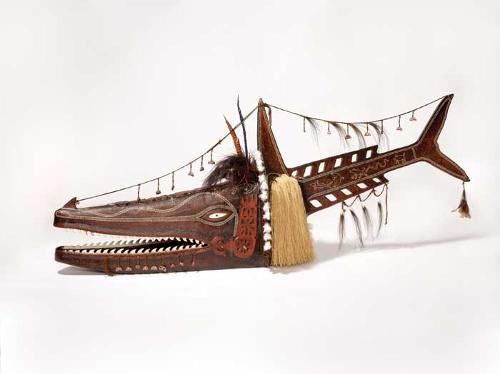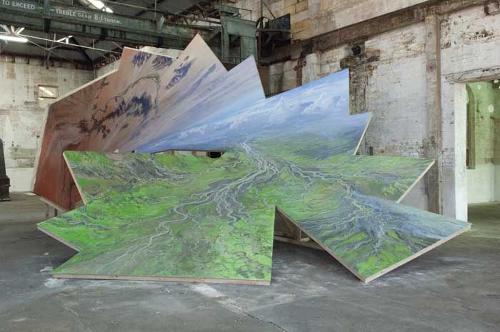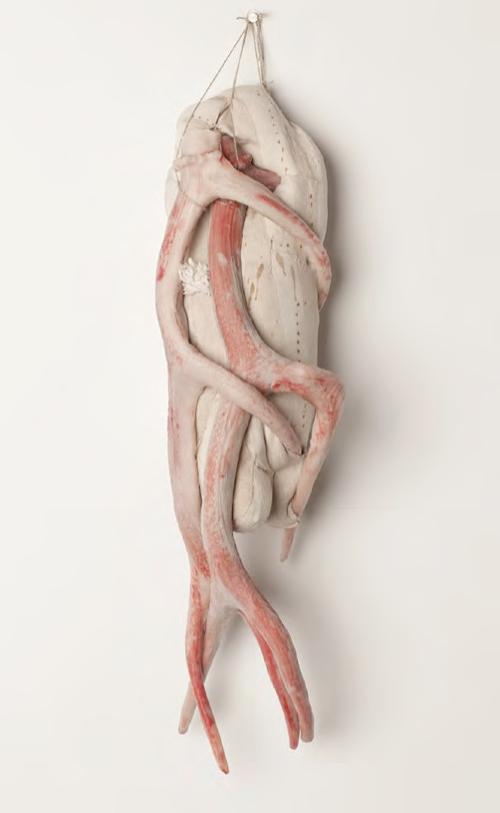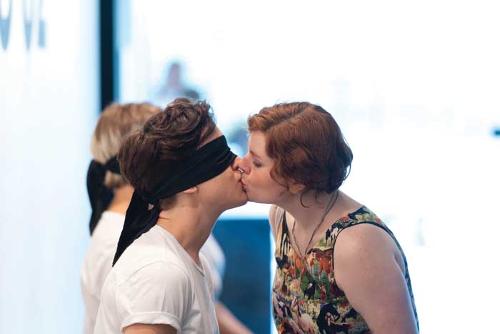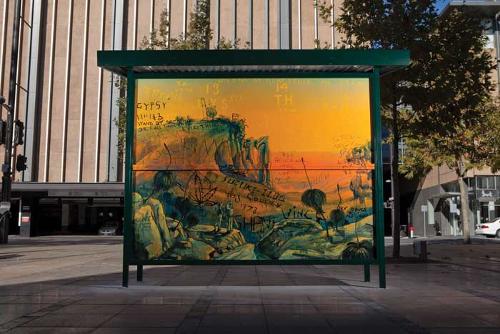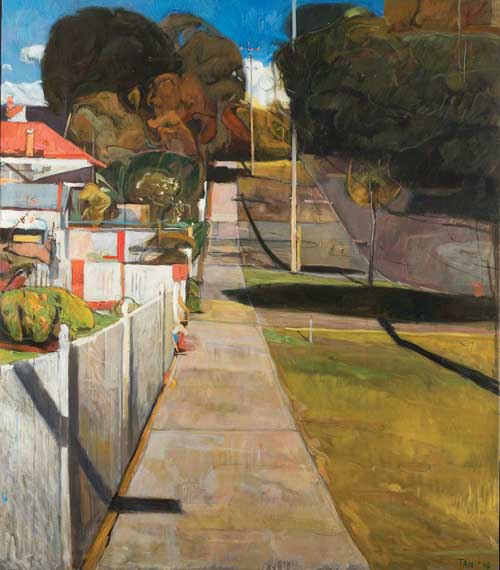
I tried not to begin this review with a reference to the fact that Shaun Tan is primarily known as the award-winning author and illustrator of a series of beautifully melancholy and often surreally allegorical books, among them The Lost Thing, for which he recently won an Academy Award. I have evidently failed, as this fact is somewhat necessary in contextualising the often illustrative and narrative content of Tan's work. I resisted this beginning as this fact seemed to act as a statement of differentiation, a proviso that Suburban Odyssey, his solo exhibition at Fremantle Art Centre might be judged on different terms to one mounted by an 'artist’. Certainly, Suburban Odyssey presents original drawings and plans for Tan’s many publications alongside paintings produced ‘independently’ yet concurrently with these projects. However, where a shift in motivation might be expected to significantly alter concept or content, Tan’s many works - paintings, drawings and animations – exist as a sustained and coherent investigation into the Australian suburban subject, united as a cohesive body of work rather than the combination of profession and sideline this differentiation might suggest.
There is, however, some difference: where Tan’s published projects tend to utilise surrealist, anthropomorphic characterisation and dialogues between character and landscape, his paintings focus largely on the suburban landscape as a character unto itself, presenting observational renderings of environments and situations immediate and familiar: the quiet suburban street or car park, the local oval or beach, still and deep in layers of texture and lustrous colour. These works are unified by a looming charge of sentiment and strangeness, an inclination towards something fantastic lurking beneath the ordinary.
Outside of his narrative work and bar an occasional portrait, Tan’s landscapes are often without figurative reference, although they are both charged with possibility and worn with familiarity. Large-scale paintings on canvas, such as Dormitory Suburb (2001), a triptych that sandwiches a glowing daylight street scene featuring an unidentifiable pod-like object between two panels of inky and resonant darkness, read almost as stage-sets for the actions that appear elsewhere on the page. The languid, curlicued brushstrokes and afternoon colours of 5th Avenue Mount Lawley (2004) lend the familiar red brick and burnt lawns a quality of dreamlike nostalgia; as in dreams, the uncanny is never far away.
These larger works reveal a deftness for composition and an acute sense of Australian suburban space. Contrasts in density and sparseness and in surface and depth simulate the expanse of both suburb and sky. It’s Tan’s attention to detail, his remarkable awareness of how form and method can translate into significance that gives his more observational images their charge: layers of translucent paint and blurred edges result in images that slip and hover like memories, concealed detail suggest hidden potentials lurking beneath surfaces.
This willingness to mesh mark-making and meaning is occasionally so literal that it wanders close to twee. Occasional sculptural additions – a small window through which a photographed power pole can be viewed, or a structural geometry onto which buildings are painted – take risks with kitsch, however any inclination towards gimmick and cliché is balanced by Tan’s unique blend of irreverence and sincerity and by his thorough knowledge and occasional citation of Australian painting. He cites John Brack’s angularity, Brett Whiteley’s sensuality and Fred William’s globular impasto with wit and elegance, clearly aware of the lineage of his looking.
In contrast to the almost baroque richness of the larger canvases, a group of smaller paintings, more relaxed in finish yet too refined to be studies, move away from Tan’s almost habitually rich detail and stylisation, presenting a series of sensitively painted snapshot moments. Their perspective is of the moments around activity; as if cast off from a family album of more structured memories, they capture sudden moments of strange beauty that occur in odd places - an orange cat bright and small against the shadows, the rose glow of a blank wall facing the sunset, a vivid group of ibises caught in the chlorine blue of a swimming pool. These works are simple and beautiful in their poignant familiarity, and they serve as a reminder that Tan’s skill as an artist in all of his many mediums is not to imbue the ordinary with a new, fantastic significance but to awaken the viewer to potency, poetry and complexity already latent in what could be lazily referred to as banal or trivial, to the grander narratives disguised in small stories of the Australian everyday.

